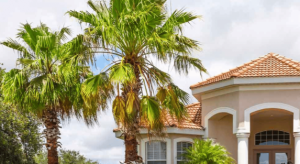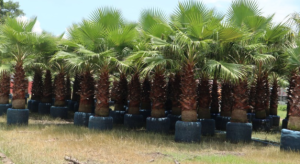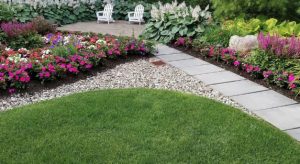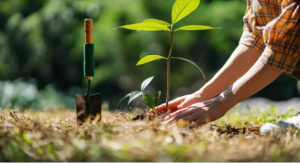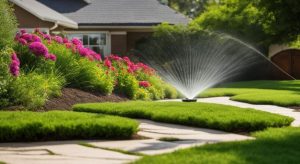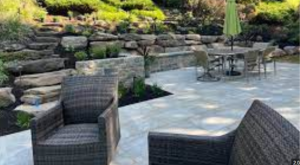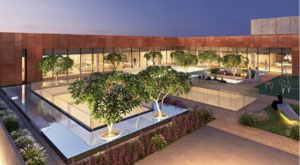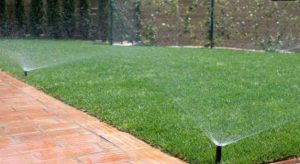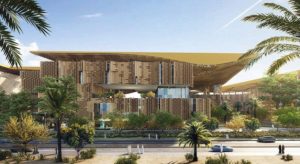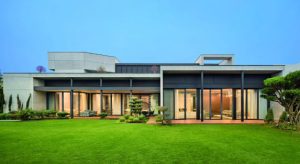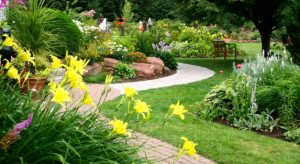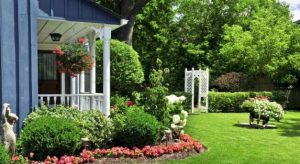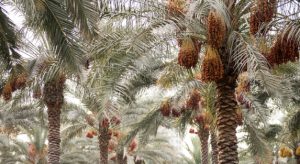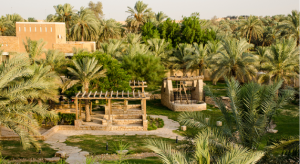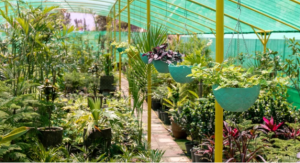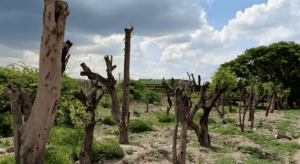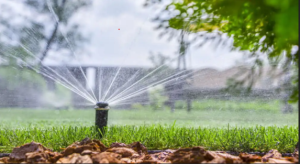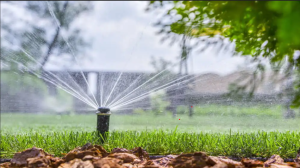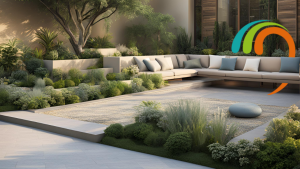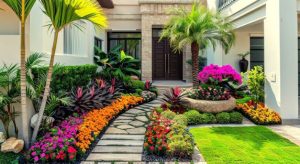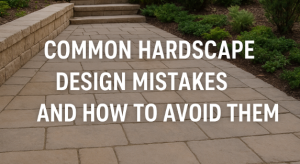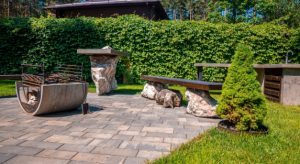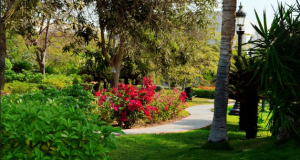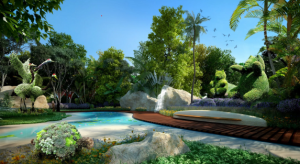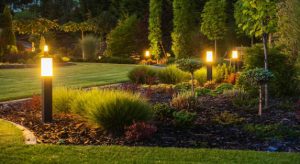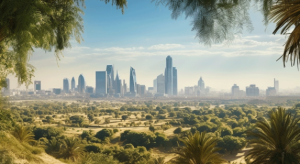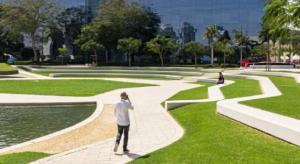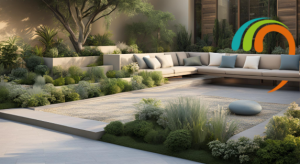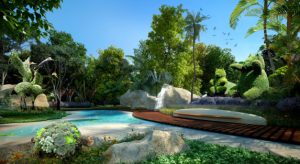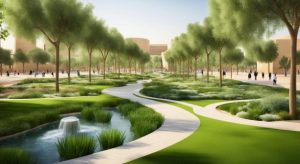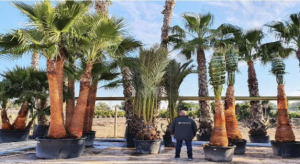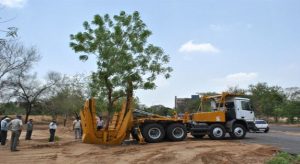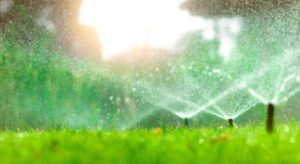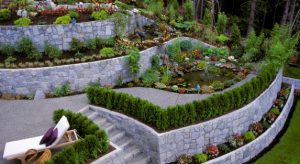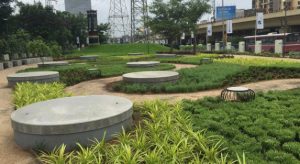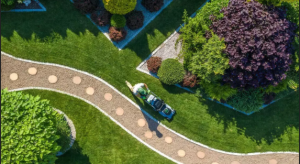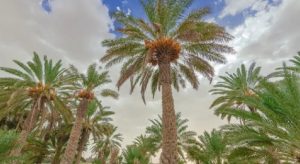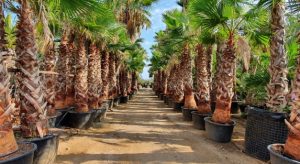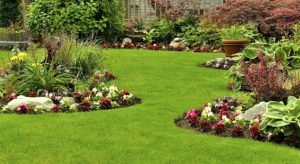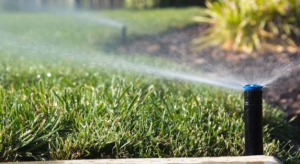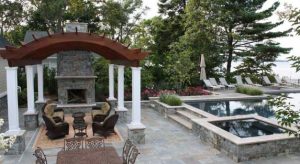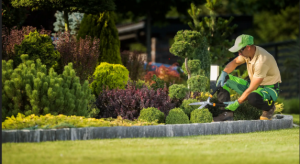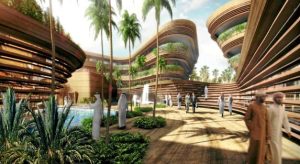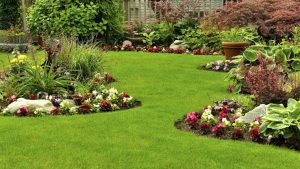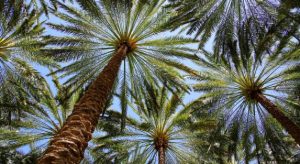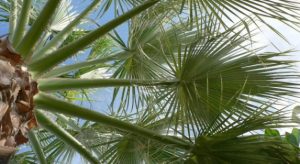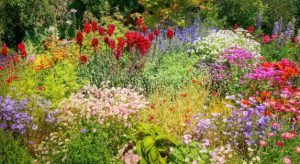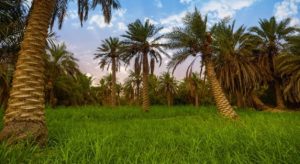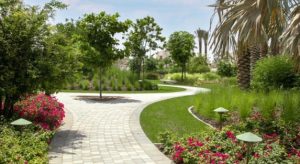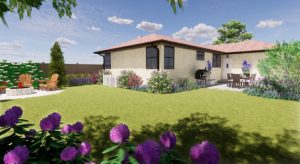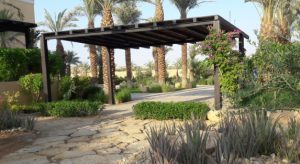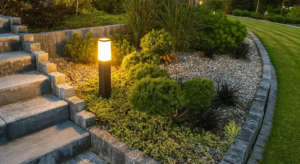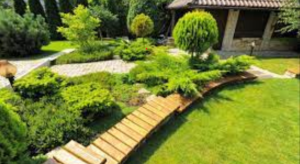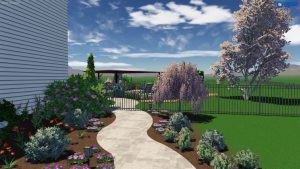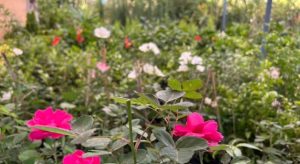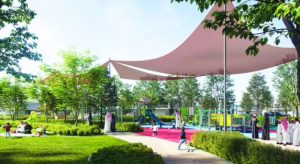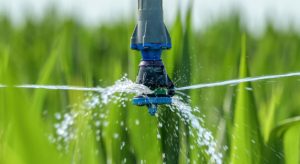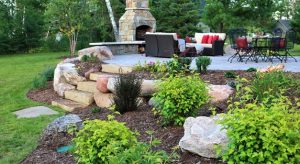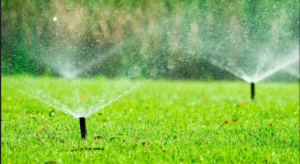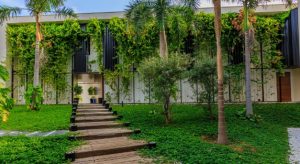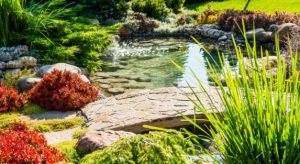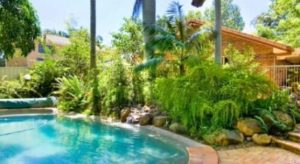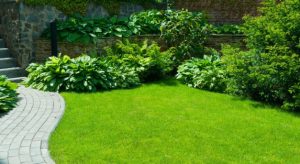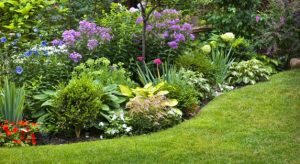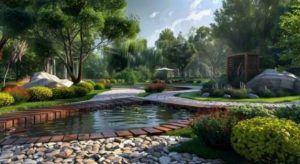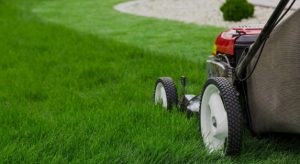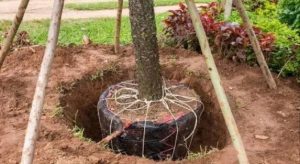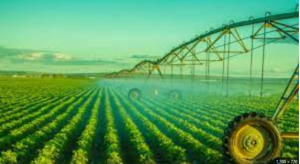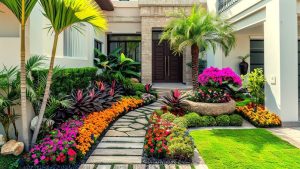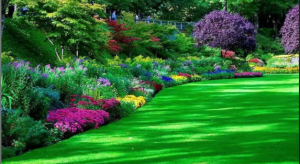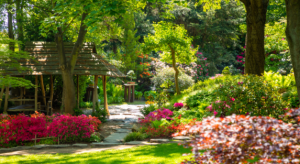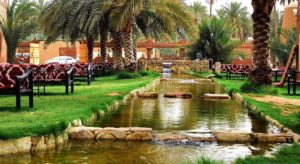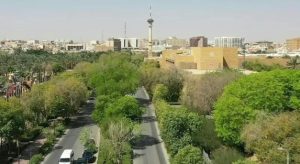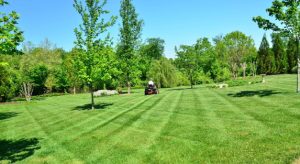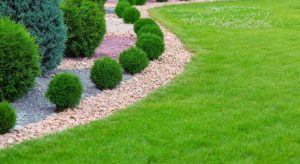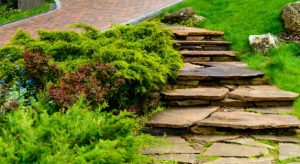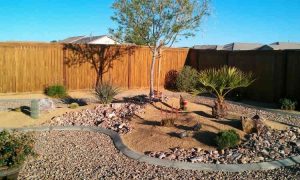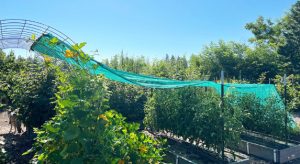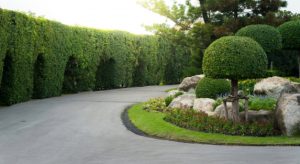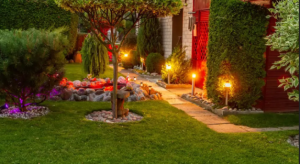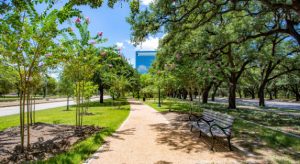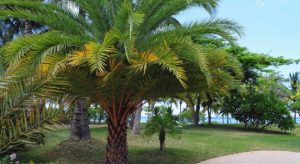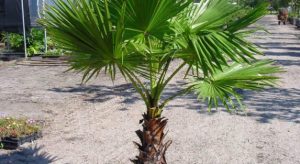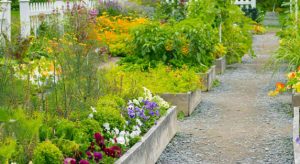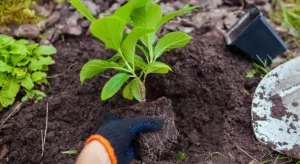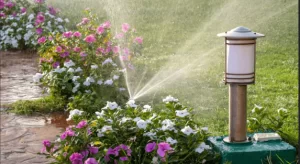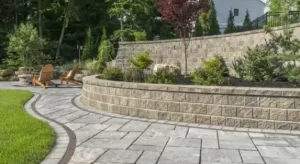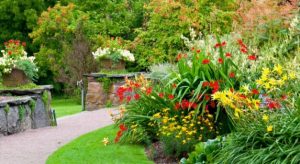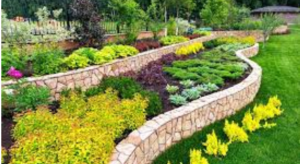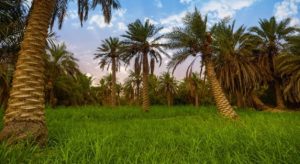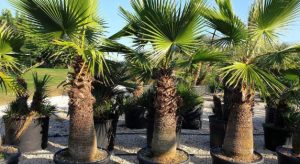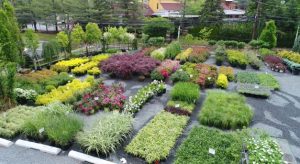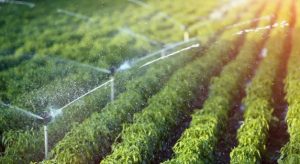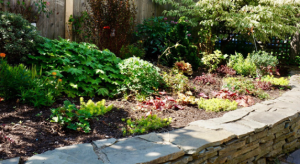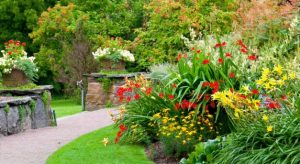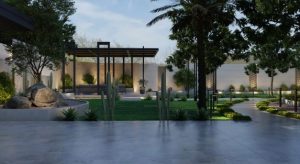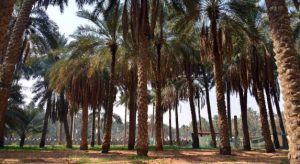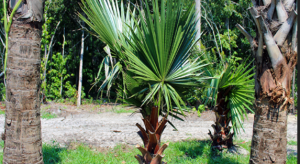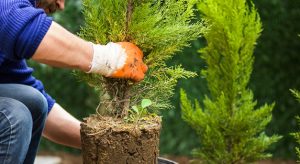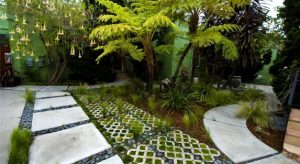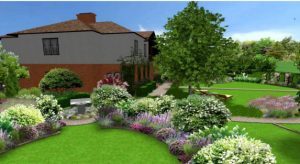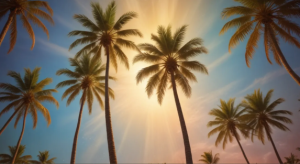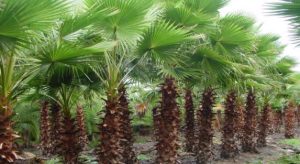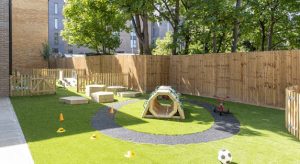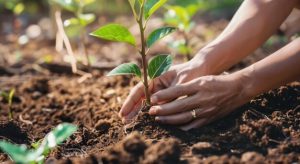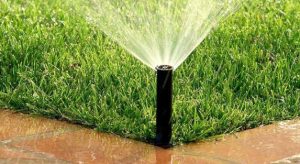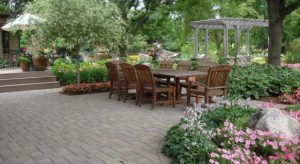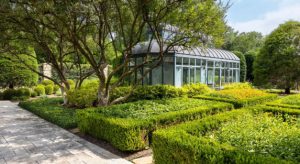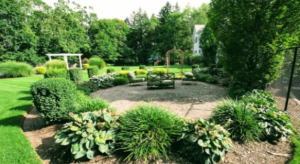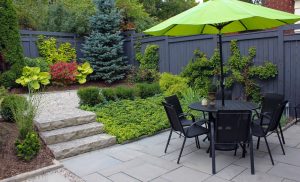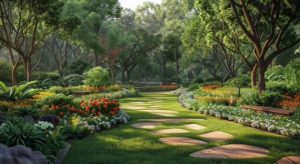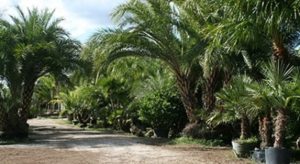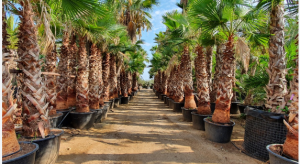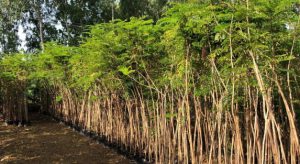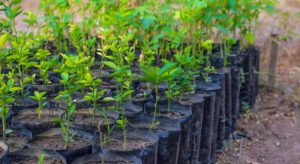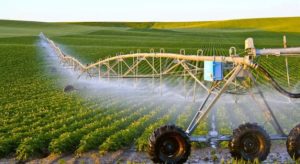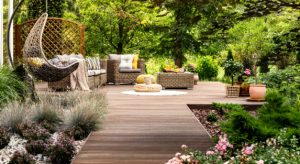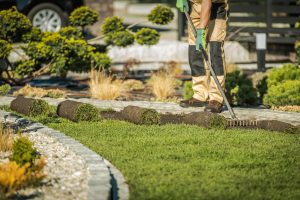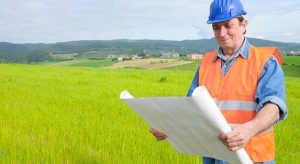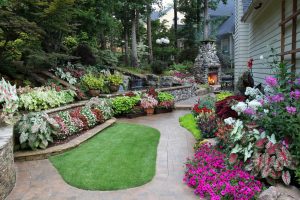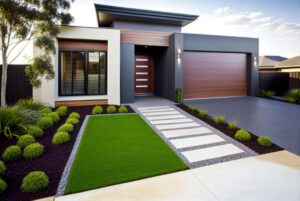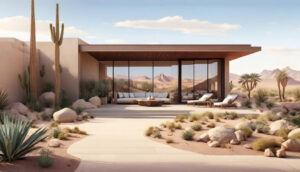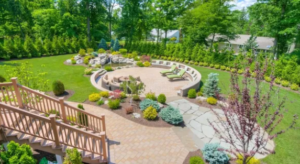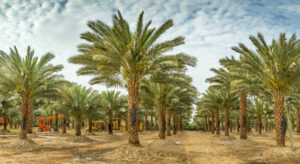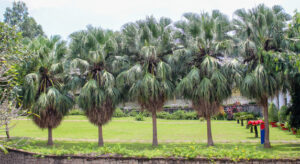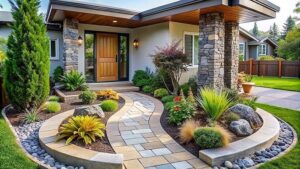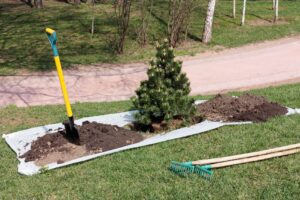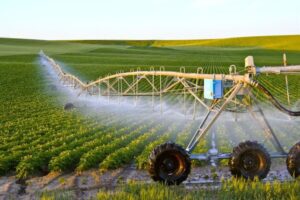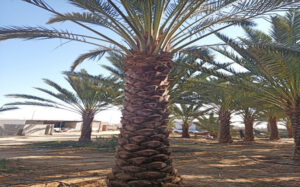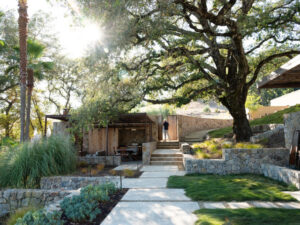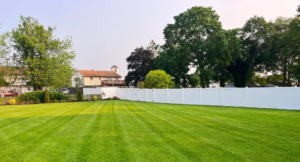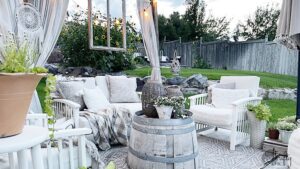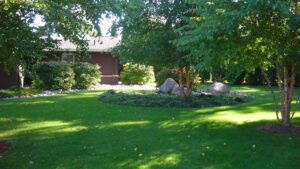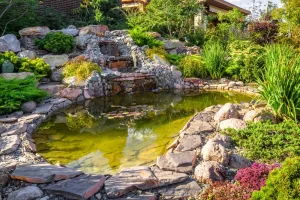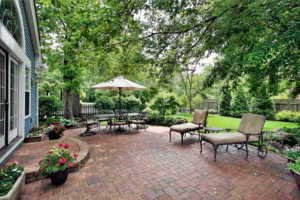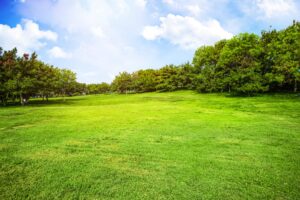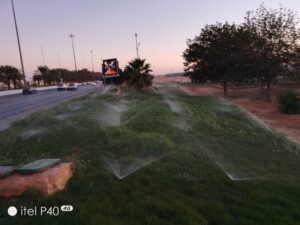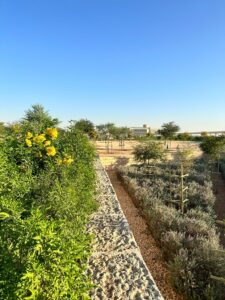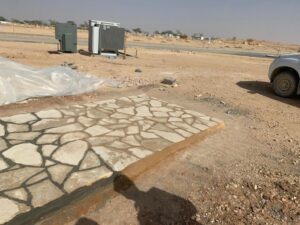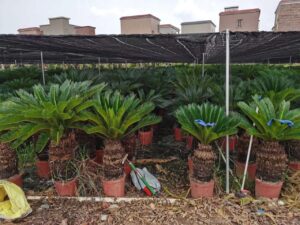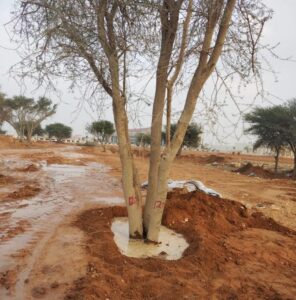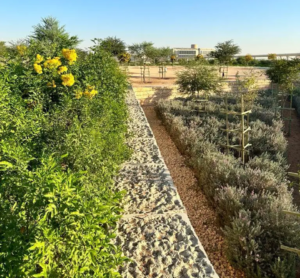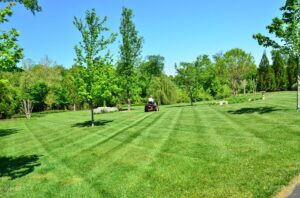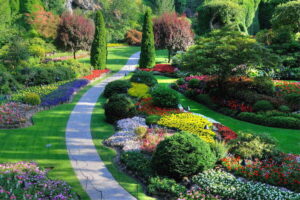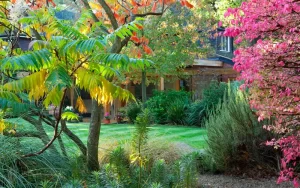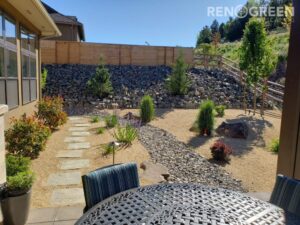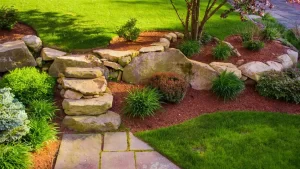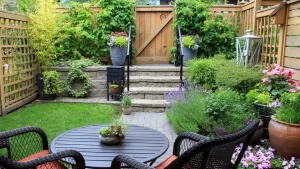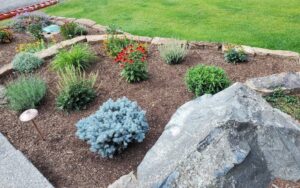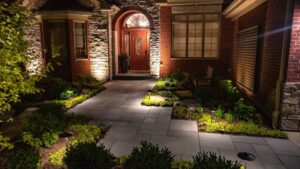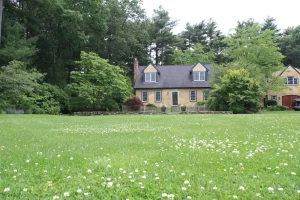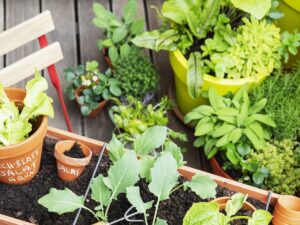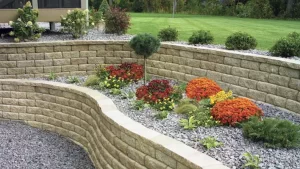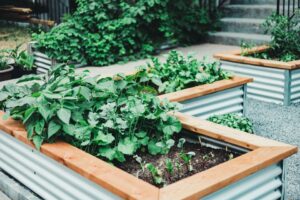Top Trends in Irrigation Installation for Saudi Arabian Landscapes
25 July, 2025
Introduction: Water is Life in the Desert
In a country like Saudi Arabia, where water scarcity is a major concern, landscaping is a delicate balance of beauty and sustainability. With extreme heat and minimal rainfall, the role of irrigation has never been more critical. Gone are the days of manual watering or inefficient systems—today, irrigation installation in Saudi Arabia has evolved, thanks to innovative technology and growing environmental consciousness.
From smart irrigation controllers to water-saving drip systems, modern trends are reshaping how landscapes are nurtured across cities like Riyadh, Jeddah, and Dammam. Let's explore the latest trends that are transforming the face of irrigation in the Kingdom.
1. Smart Irrigation Systems: The Digital Revolution in Landscape Care
Technology is revolutionizing every industry—and landscaping is no exception. In the field of irrigation installation in Saudi Arabia, smart irrigation systems are rapidly replacing traditional, manual methods. These systems rely on intelligent technology that combines weather data, soil moisture sensors, and artificial intelligence to create automated watering schedules. With the help of mobile apps, homeowners and landscape professionals can control water distribution remotely, ensuring that each section of the garden receives just the right amount of water.
This trend is particularly significant in Saudi Arabia, where water conservation is a top priority. Smart systems help minimize waste, lower water bills, and keep landscapes healthy even in the harshest climates. They are capable of detecting rainfall, adjusting schedules automatically, and notifying users about system faults or leaks. In cities like Riyadh and Jeddah, where landscaping is a booming industry, this level of automation offers both convenience and sustainability.
Furthermore, government regulations and green building certifications are encouraging the shift towards smart irrigation. Companies offering irrigation installation in Saudi Arabia now package smart controllers as part of their standard service offerings. It's no longer just about watering plants—it's about intelligent water management that supports the Kingdom’s broader vision of sustainability and technological advancement.
The human touch? These systems are empowering individuals to take control of their landscapes with ease, offering peace of mind to families and professionals who want their gardens to thrive without unnecessary stress or constant monitoring.
2. Drip Irrigation: Precision Watering for a Parched Environment
Among the most impactful innovations in Saudi Arabia's landscaping scene is drip irrigation, a method designed for precision and water efficiency. In a region known for its arid climate and limited freshwater resources, this trend is gaining significant momentum. Unlike sprinkler systems that often waste water through evaporation and runoff, drip irrigation delivers water slowly and directly to the root zones of plants through a network of tubing and emitters.
This targeted approach reduces water waste dramatically and improves plant health by maintaining consistent soil moisture levels. Homeowners, municipalities, and developers are increasingly requesting drip systems during irrigation installation projects in Saudi Arabia, particularly for flower beds, shrubs, and agricultural areas. The method works exceptionally well with native and drought-resistant plants, which are commonly used in Saudi landscapes.
Installation is relatively straightforward, and maintenance costs are minimal compared to conventional systems. The tubing can be hidden beneath mulch or soil, preserving the aesthetic appeal of the landscape. Moreover, drip irrigation can easily be integrated with smart controllers for an even more efficient system.
What makes drip irrigation especially appealing is its scalability. Whether you're managing a small backyard garden in Dammam or a large-scale commercial project in Mecca, drip systems can be tailored to fit any landscape size or plant type. This versatility makes it one of the most requested features in modern irrigation installation across Saudi Arabia.
Ultimately, this trend reflects a broader shift toward sustainability, precision, and responsible resource management—qualities that align perfectly with Saudi Arabia’s evolving environmental goals and lifestyle preferences.
3. Sustainable Landscaping & Xeriscaping: A New Design Philosophy
Sustainability is no longer a buzzword—it's a necessity, especially in a country like Saudi Arabia where water is scarce and summer temperatures soar. As a result, sustainable landscaping and xeriscaping are becoming key design principles in modern garden development. These eco-conscious approaches focus on minimizing water usage by combining efficient irrigation methods with smart plant selection and landscape planning.
One of the major shifts in irrigation installation in Saudi Arabia is the use of native or drought-tolerant plants that require minimal watering. This reduces the overall need for irrigation while maintaining a lush, attractive outdoor space. Grass lawns, once a symbol of luxury, are now being replaced with gravel paths, artificial turf, or ground cover that requires little to no irrigation. Trees and shrubs are chosen not just for aesthetics but for their ability to thrive in extreme heat.
This trend is further amplified by government support. Saudi Arabia’s Vision 2030 encourages eco-friendly construction and green urban spaces, which has made xeriscaping not only popular but also highly encouraged in both residential and commercial developments. Landscaping companies offering irrigation installation services in Saudi Arabia are now expected to incorporate these sustainable principles into their designs.
Homeowners appreciate the reduced maintenance costs and lower water bills, while municipalities benefit from long-term conservation. Xeriscaped landscapes are also more resilient, better able to withstand droughts and sudden temperature changes.
What’s more, sustainable landscaping adds a sense of purpose and responsibility to landscape design. It reflects the growing awareness among Saudi residents that beautiful outdoor spaces should not come at the cost of the environment. It’s landscaping that cares—not just for appearance, but for the future.
4. Subsurface Irrigation: The Hidden Hero of Water Efficiency
If there's one innovation quietly making waves in Saudi landscaping, it’s subsurface irrigation. As the name implies, this technique involves burying irrigation lines beneath the soil surface to deliver water directly to plant roots. It’s an incredibly efficient system that prevents surface evaporation—an important advantage in a country where every drop counts.
Subsurface irrigation is gaining popularity in premium landscape projects, golf courses, and government parks throughout the Kingdom. Because the water is applied underground, there is minimal waste and virtually no risk of water runoff. This technique also helps keep surface areas clean and dry, making it ideal for walking paths, playgrounds, and recreational spaces where water pooling could be a concern.
The aesthetic benefit is also significant. Unlike traditional sprinkler systems that can be visually disruptive, subsurface irrigation keeps everything out of sight. Landscape designers love the freedom it offers, as they can focus purely on design elements without accommodating visible irrigation equipment.
Moreover, when implemented properly by experienced professionals, subsurface irrigation systems are low-maintenance and long-lasting. Many contractors specializing in irrigation installation in Saudi Arabia are now trained in designing and installing these systems, making them more accessible to clients across sectors.
For homeowners and developers who want high performance and visual cleanliness, subsurface irrigation is a perfect match. It’s another example of how modern technology and thoughtful design are blending to create smarter, greener, and more elegant outdoor spaces in the Kingdom.
5. Solar-Powered and Recycled Water Systems: Future-Ready Irrigation
Saudi Arabia is blessed with year-round sunlight, making solar-powered irrigation systems an obvious and increasingly popular choice. These systems use solar panels to generate energy that powers irrigation controllers and water pumps. They're perfect for remote gardens, farms, and large landscapes where connecting to the power grid may be expensive or impractical.
Integrating solar energy into irrigation installation projects in Saudi Arabia aligns with the country’s broader goals of sustainability and energy diversification. With the right setup, these systems are both cost-effective and environmentally friendly. They're especially useful for agricultural areas and private estates that require self-sufficient watering solutions.
Another green trend that’s gaining momentum is the use of greywater and treated wastewater for irrigation. Rather than wasting water from showers, laundry, or sinks, greywater systems treat and repurpose it for landscape irrigation. This reduces freshwater demand and aligns with Saudi Arabia’s long-term vision for environmental conservation.
Government regulations are increasingly favoring such solutions. In several municipalities, new construction projects are now required to include water recycling systems. Landscape architects and irrigation installation companies in Saudi Arabia are responding by offering integrated systems that include both solar-powered components and greywater solutions.
Together, these innovations represent a shift from reactive to proactive water management. They're not just trends—they're necessary adaptations for a region where sustainability is paramount. More than ever, irrigation is not just about watering plants; it’s about using every resource wisely.
6. Integrated Irrigation Design: Where Function Meets Aesthetics
Modern landscape architecture in Saudi Arabia is shifting toward holistic design—and that includes irrigation. Today, irrigation installation in Saudi Arabia is no longer treated as an afterthought but as an integral part of the landscape's initial blueprint. Professional landscapers and irrigation specialists are collaborating right from the planning stage to ensure that functionality and beauty work hand in hand.
A big part of this trend involves the discreet placement of irrigation components. Sprinkler heads are now retractable and hidden beneath lawns or garden beds. Drip lines are color-matched or placed beneath mulch to blend with the natural environment. Even valve boxes and controllers are being installed in concealed enclosures that harmonize with outdoor decor.
Zones are customized not only by plant type but also by sun exposure and slope. For example, sunny areas may require more frequent watering than shaded ones, and sloped gardens may benefit from staggered watering schedules to prevent runoff. This level of detail ensures that water is used efficiently and that every plant thrives in its microclimate.
This thoughtful integration also reduces long-term maintenance. Pipes are less likely to get damaged, and plants grow more evenly. Most importantly, it reflects a deeper awareness among homeowners and developers: that irrigation is not just about keeping plants alive—it’s about elevating the entire outdoor experience.
So, when clients seek irrigation installation in Saudi Arabia, they’re not just getting pipes and sprinklers—they’re investing in a system that enhances both the functionality and visual appeal of their landscape.
7. Government Policies & Vision 2030: Shaping the Future of Irrigation
Saudi Arabia’s Vision 2030 is a roadmap for the future—and it’s already reshaping how landscapes are built and irrigated. As part of its environmental focus, the government is rolling out policies that directly influence the standards of irrigation installation in Saudi Arabia.
One of the major goals is to reduce water consumption across sectors, including landscaping. This has led to regulations encouraging the use of efficient systems such as drip irrigation, subsurface setups, and the incorporation of greywater reuse. Many municipalities now require new residential and commercial developments to comply with specific irrigation efficiency standards as a condition for project approval.
Moreover, government-supported green initiatives, such as the “Saudi Green Initiative,” are promoting tree planting, urban greenery, and sustainable outdoor environments. These campaigns have increased public awareness about the importance of smart irrigation and water-saving technologies.
In response, contractors and irrigation providers are updating their methods to align with the new expectations. It’s not uncommon for irrigation installation experts in Saudi Arabia to offer sustainability audits and system upgrades to help property owners meet compliance goals and benefit from incentive programs.
This proactive stance from the government is creating a ripple effect across the industry. Property developers are now prioritizing sustainable irrigation in their master plans. Homeowners are choosing efficient systems not just for savings, but to be part of a bigger national movement.
The bottom line? Vision 2030 is not just a government goal—it’s becoming a lifestyle shift that influences everything from public parks to private villas. And irrigation, as a critical component of this transformation, is playing a leading role in building the greener, more sustainable Saudi Arabia of tomorrow.
Conclusion: Smarter, Greener, and Future-Ready Landscapes
Irrigation in Saudi Arabia has come a long way from the days of manual watering and basic hose setups. Today, irrigation installation in Saudi Arabia reflects a growing demand for intelligent, sustainable, and aesthetically integrated solutions that meet the unique challenges of the region’s climate and water scarcity.
From smart irrigation systems that adjust based on weather conditions to solar-powered pumps that harness the Kingdom’s abundant sunlight, the trends shaping the industry are both technologically advanced and environmentally conscious. Drip and subsurface irrigation methods are redefining how water is distributed, while government-led initiatives and urban planning guidelines are encouraging innovation and efficiency.
For homeowners, developers, and municipalities alike, these trends offer more than just greener lawns—they offer peace of mind, cost savings, and alignment with national sustainability goals. The fusion of function, design, and eco-responsibility is giving rise to landscapes that are not only beautiful but built to last in a challenging environment.
As we look ahead, one thing is clear: investing in smart and sustainable irrigation is no longer optional in Saudi Arabia—it’s essential. Whether you’re planning a villa garden in Riyadh or managing a commercial project in Jeddah, staying ahead of these trends will ensure your landscape thrives today and remains resilient for the future.
- Fountain and Waterfalls
- Gardening
- hardscape
- Irrigation system
- Landscape
- Lawn
- Nursery
- Palm Tree
- Plantation and Maintenance
- softscape
- Tree Transplanting
- Washingtonian Tree
Categories
Latest Post
- Fountain and Waterfalls
- Gardening
- hardscape
- Irrigation system
- Landscape
- Lawn
- Nursery
- Palm Tree
- Plantation and Maintenance
- softscape
- Tree Transplanting
- Washingtonian Tree





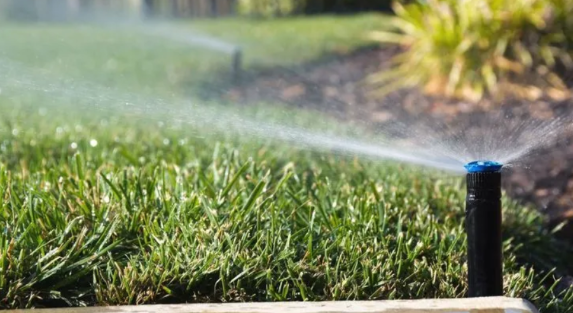
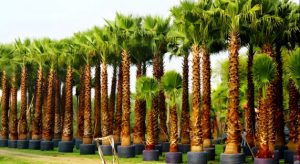
 .
.